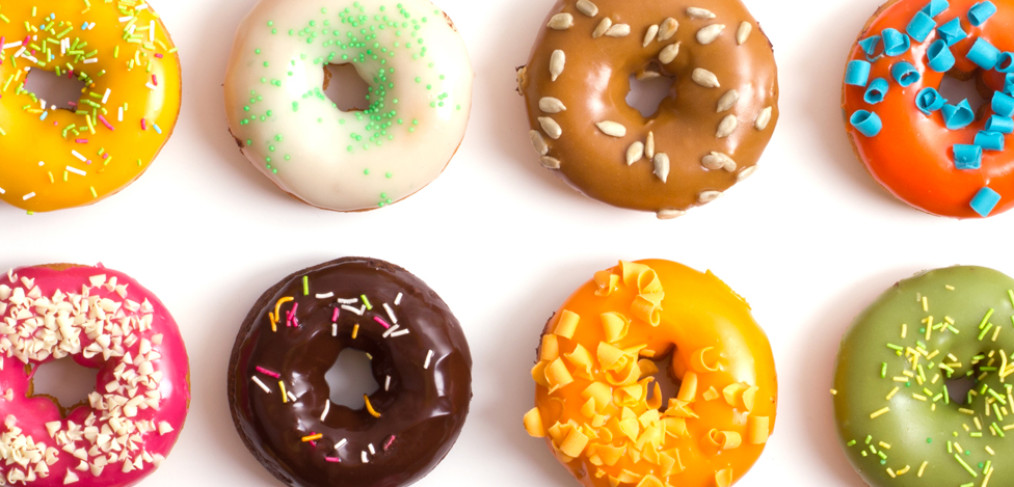
5 Sugar Facts
Americans consume an average of 32 teaspoons of added sugar each day. According to the USDA, sugar is the number one food additive. Sure it’s in jam, ice cream, and cereal. But it’s also in pizza, bread, processed meats, boxed meals, soup, crackers, spaghetti sauce, canned vegetables, yogurt, ketchup, salad dressing, mayonnaise, and peanut butter.In fact, since 1959, our intake of corn sweeteners has increased 800%. The CDC estimates that children and adolescents obtain approximately 16% of their total caloric intake from added sugars.
1. It’s everywhere

How do you find the sugar? Always read the nutrition facts and ingredients. The rule is that ingredients have to be listed in order of predominance. But even if sugar isn’t one of the first ingredients, a product could list sugar under various names later in the list that add up to a much great amount of sugar than you think. We noticed that the ingredients for a jar of honey roasted peanuts listed four types of sweeteners (sugar, honey, corn syrup and fructose). For one jar of nuts… now that really is nuts!
Here are other names for sugar to look out for on food labels: high-fructose corn syrup, corn sweetener, corn syrup, fructose, fruit juice concentrate, honey, brown sugar, syrup, glucose (dextrose), invert sugar, lactose, maltose, sugar (sucrose), molasses, and raw sugar.
2. It’s dangerous
Refined sugar and high fructose corn syrup have no nutritional value. At the most basic level these zero-value calories replace necessary nutrients in our diet, leading to poor health, or are consumed over and above our caloric needs, causing weight gain. Now researchers are suggesting that the danger in sugar is not just how much we eat, but that refined sugar is inherently dangerous. Studies suggest links between sugar consumption and heart disease, diabetes, low immunity, obesity, and cancer.
3. It’s addictive

Consumption of sugar will often increase over time, because refined sugar creates a high in our bodies, as it’s quickly turned into glucose in our bloodstream. But without fiber and protein, that high dissipates quickly, leaving us wanting even more sugar, as we crash.
Sugar actually releases chemicals that activate the brain’s pleasure receptors, the same way drugs do, so you can get physically addicted to sugar. People who are addicted to sugar will often consume increasing amounts to satisfy their cravings. And cutting sugar out can lead to withdrawals, depending on the levels of consumption and addiction. Try cutting back slowly, taking out a few things from your diet at a time, until you’ve trained your body not to crave the sugar.
4. It hurts your skin
Eating a lot of added sugar can trigger chronic, low-level inflammation in the body, which speeds up the aging process. Sugar also damages collagen and elastin, the protein fibers that keep skin looking young. When sugar is processed in the body, a process called glycation occurs in the bloodstream, in which sugar binds to proteins creating harmful new molecules. Glycation damages collagen and elastin, leading to wrinkles and sagging skin. Glycation also damages the type III collagen in the body, making skin dry and dull.
5. It has its place
The sugar that causes so many problems is the added, refined sugar in foods. Natural sugars are an important part of nutrition. Healthy foods, like fruits, vegetables, whole grains, dairy and legumes contain sugars. So you can still have some sweetness in your diet, just try to find some balance.
http://www.usda.gov/factbook/chapter2.pdf
http://www.cdc.gov/nchs/data/databriefs/db122.htm#findings
